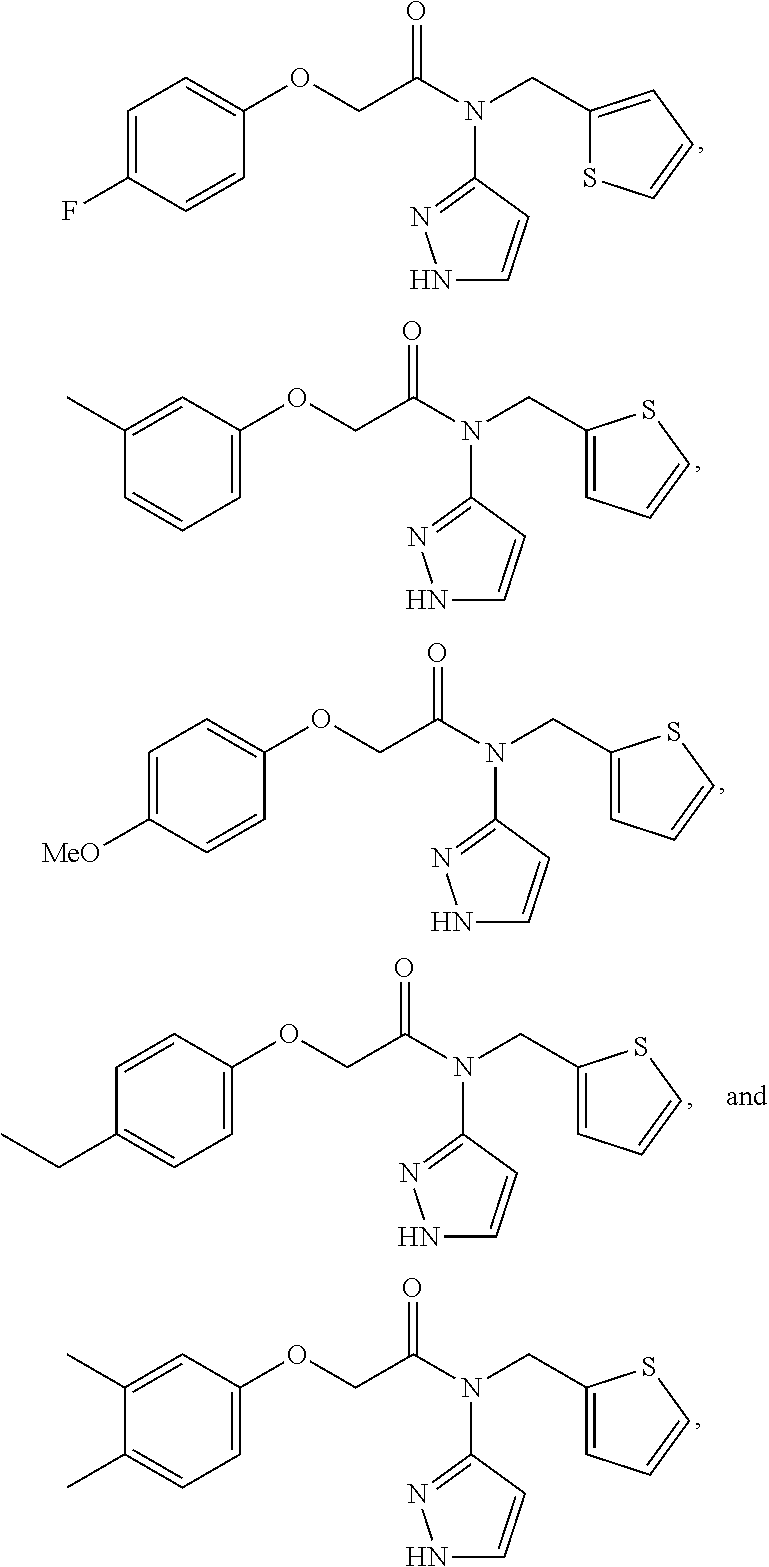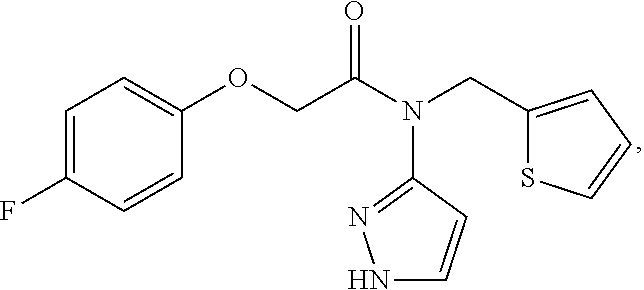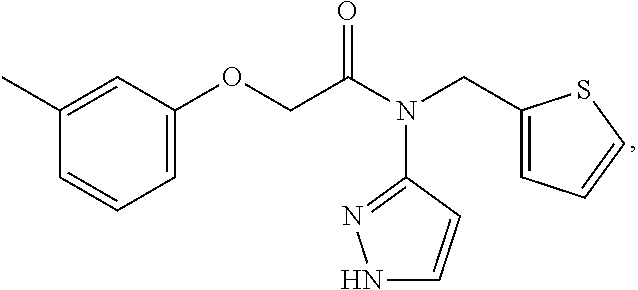Compounds useful as modulators of TRPM8
- Summary
- Abstract
- Description
- Claims
- Application Information
AI Technical Summary
Benefits of technology
Problems solved by technology
Method used
Image
Examples
example 1
and Characterization
[0281]The compounds disclosed herein may be synthesized by methods described below, or by modification of these methods. Ways of modifying the methodology include, among others, temperature, solvent, reagents etc., known to those skilled in the art. In general, during any of the processes for preparation of the compounds disclosed herein, it may be necessary and / or desirable to protect sensitive or reactive groups on any of the molecules concerned. This may be achieved by means of conventional protecting groups, such as those described in Protective Groups in Organic Chemistry (ed. J. F. W. McOmie, Plenum Press, 1973); and P. G. M. Green, T. W. Wutts, Protecting Groups in Organic Synthesis (3rd ed.) Wiley, New York (1999), which are both hereby incorporated herein by reference in their entirety. The protecting groups may be removed at a convenient subsequent stage using methods known from the art. Synthetic chemistry transformations useful in synthesizing applica...
example 1.1
nd Characterization of N-(1H-pyrazol-3-yl)-N-(thiophen-2-ylmethyl)-2-(m-tolyloxy)acetamide (Compound 101)
[0284]
[0285]2-(m-tolyloxy)acetic acid (1.25 g, 7.52 mmol, 1 equiv) was suspended in anhydrous dichloromethane (DCM; 40 mL) under nitrogen and cooled to −45° C. CDI (1.26 g, 7.77 mmol, 1.03 equiv) was then added as a solution in anhydrous DCM (18 mL). The mixture was allowed to warm to room temperature and then stirred for 3 hours. Approximately 95% of the DCM solvent was then removed under vacuum to give a residue. To this residue was then added N-(thiophen-2-ylmethyl)-1H-pyrazol-3-amine (1.62 g, 9.04 mmol, 1.2 equiv) dissolved in anhydrous DCM (15 mL). The mixture was heated to a 110° C. in an oil bath, under nitrogen, set up in a way which allowed all the DCM to escape, to give a neat reaction mixture, which was stirred overnight. The resulting residue was then dissolved in MeOH and purified by HPLC using a 0.1% formic acid in water:ACN gradient (35% ACN to 45% ACN over 30 minu...
example 1.2
nd Characterization of 2-(4-flourophenoxy)-N-(1H-pyrazol-5-yl)-N-(thiophen-2-ylmethyl)acetamide (Compound 102)
[0286]
[0287]2-(4-fluorophenoxy)acetic acid (20.0 g, 117.6 mmol) was dissolved in 250 mL of anhydrous DMF. The solution was chilled to an internal temperature of below −10 degree Celsius. TBTU (45.2 g, 141.1 mmol) was added in portions while maintaining the internal temperature below −10 degree Celsius, followed by DIPEA (79 mL, 453 mmol). The reaction mixture was allowed to stir at or below −10 degrees Celsius for 30 minutes, then amine pTSA salt (43.4 g, 123.4 mmol) was added in portions over 10 minutes while maintaining the temperature at or below −10 degrees Celsius. The reaction was stirred at or below −10 degrees Celsius for 4 hours then allowed to warm to room temperature overnight. The reaction was diluted with 500 mL of ethyl acetate and washed with 500 mL of water. The aqueous layer was washed with ethyl acetate (500 mL×1, 250 mL×1), and the organic layers were comb...
PUM
| Property | Measurement | Unit |
|---|---|---|
| concentration | aaaaa | aaaaa |
Abstract
Description
Claims
Application Information
 Login to View More
Login to View More - R&D
- Intellectual Property
- Life Sciences
- Materials
- Tech Scout
- Unparalleled Data Quality
- Higher Quality Content
- 60% Fewer Hallucinations
Browse by: Latest US Patents, China's latest patents, Technical Efficacy Thesaurus, Application Domain, Technology Topic, Popular Technical Reports.
© 2025 PatSnap. All rights reserved.Legal|Privacy policy|Modern Slavery Act Transparency Statement|Sitemap|About US| Contact US: help@patsnap.com



